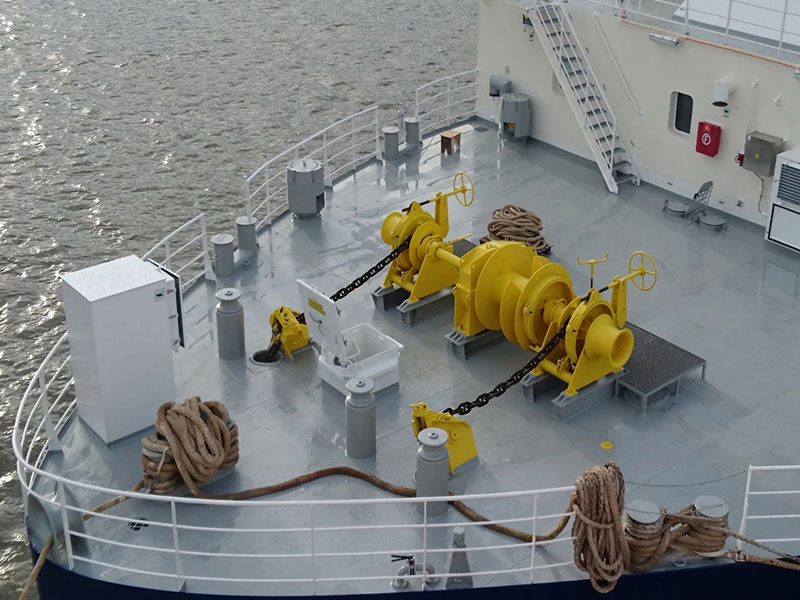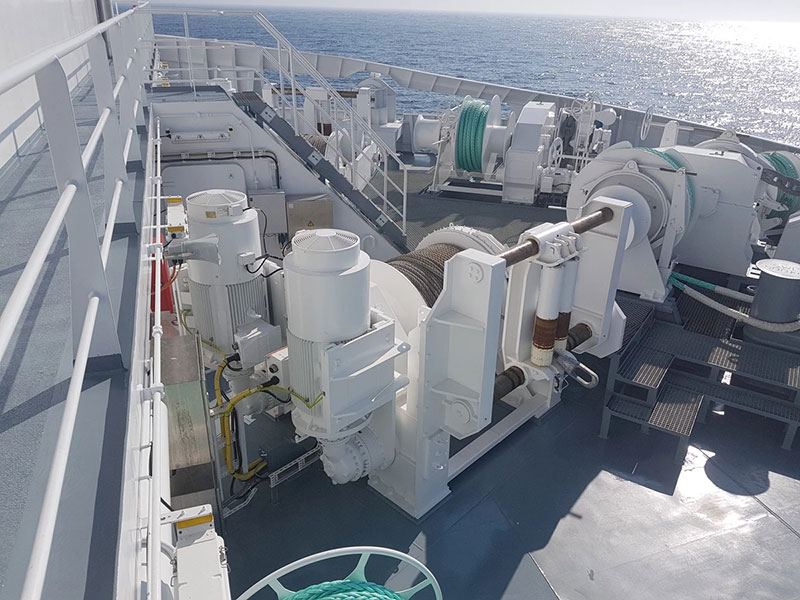Deck winches, often referred to as marine winches, are essential equipment onboard vessels and offshore platforms for various maritime operations. These powerful devices play a pivotal role in tasks such as anchoring, mooring, towing, and cargo handling. Understanding the operation and proper installation of deck winches is crucial for ensuring the safety of crew members, the integrity of the vessel, and the successful completion of maritime activities.

1. Understanding Deck Winch Operation:
Deck winches are mechanical devices designed to facilitate the handling of heavy loads and cables. They operate using various power sources, including hydraulic, electric, and diesel-driven systems. The primary components of a deck winch include the drum, which stores the cable or rope, and the winch motor that provides the necessary force to wind or unwind the cable.
Deck winches are controlled through control panels that allow operators to adjust the winch’s speed, direction, and tension. Advanced winch systems often feature electronic controls with displays that provide real-time data on load weight, cable tension, and other relevant parameters.
2. Types of Deck Winches:
There are several types of deck winches designed for specific maritime operations:
Anchor Winches: These winches are used for dropping and retrieving anchors. They ensure precise control over anchor deployment, helping vessels maintain a stable position and preventing drift.
Mooring Winches: Mooring winches are employed for securing a vessel to a berth or dock. They play a crucial role in maintaining the vessel’s stability during loading, unloading, and passenger embarkation.
Towing Winches: Towing winches are utilized for pulling or towing other vessels or objects. They are commonly found on tugboats and offshore support vessels.
Cargo Handling Winches: These winches assist in loading and unloading cargo, such as containers, heavy machinery, and equipment, from ships to docks or vice versa.

3. Installation Considerations:
The proper installation of a deck winch is essential for ensuring its optimal functionality and longevity. Here are some key considerations for deck winch installation:
Structural Integrity: The vessel’s structure should be capable of supporting the weight and force exerted by the winch during operation. Reinforcements or additional support may be required, especially for larger winches.
Location: The winch’s location should allow for easy access and operation while considering factors such as available space, proximity to the deck edge, and the need to avoid interference with other equipment.
Power Source: Determine the most suitable power source for the winch based on the vessel’s configuration and power availability. Hydraulic, electric, and diesel-driven systems each have their advantages and limitations.
Mounting and Foundation: The winch must be securely mounted to a strong foundation to prevent vibrations, shifting, or movement during operation. Proper mounting ensures consistent and reliable winch performance.
Safety Features: Install safety features such as emergency stop buttons, limit switches, and overload protection to prevent accidents and equipment damage. These features help safeguard crew members and the vessel.
Maintenance Accessibility: Design the installation to allow easy access for maintenance and repairs. Regular inspections and upkeep are essential to prevent unexpected downtime and ensure the winch’s longevity.
4. Operation Best Practices:
Safe and efficient deck winch operation requires adherence to established best practices:
Operator Training: Crew members operating the winch should undergo proper training to understand its controls, functions, and safety protocols.
Load Calculation: Calculate the load weight accurately to prevent overloading the marine winch, which can lead to equipment damage or failure.
Tension Control: Maintain appropriate tension on the cable to prevent snapping or slippage, ensuring both crew safety and load integrity.
Regular Inspections: Conduct routine inspections of the winch, including cables, ropes, and other components, to identify signs of wear, corrosion, or damage.
Weather Considerations: Account for weather conditions such as wind, waves, and currents, which can affect winch operations and require adjustments in technique.
Communication: Establish clear communication protocols between the winch operator and other crew members involved in the operation to prevent misunderstandings and ensure everyone’s safety.
In conclusion, deck winches are indispensable tools in maritime operations, enhancing vessel stability, cargo handling, and other essential tasks. Proper installation and operation are critical to ensuring the safety of crew members, maintaining equipment integrity, and achieving efficient operations. By understanding the various types of deck winches, considering installation factors, and adhering to operation best practices, maritime professionals can harness the full potential of these powerful devices while upholding safety standards at sea.